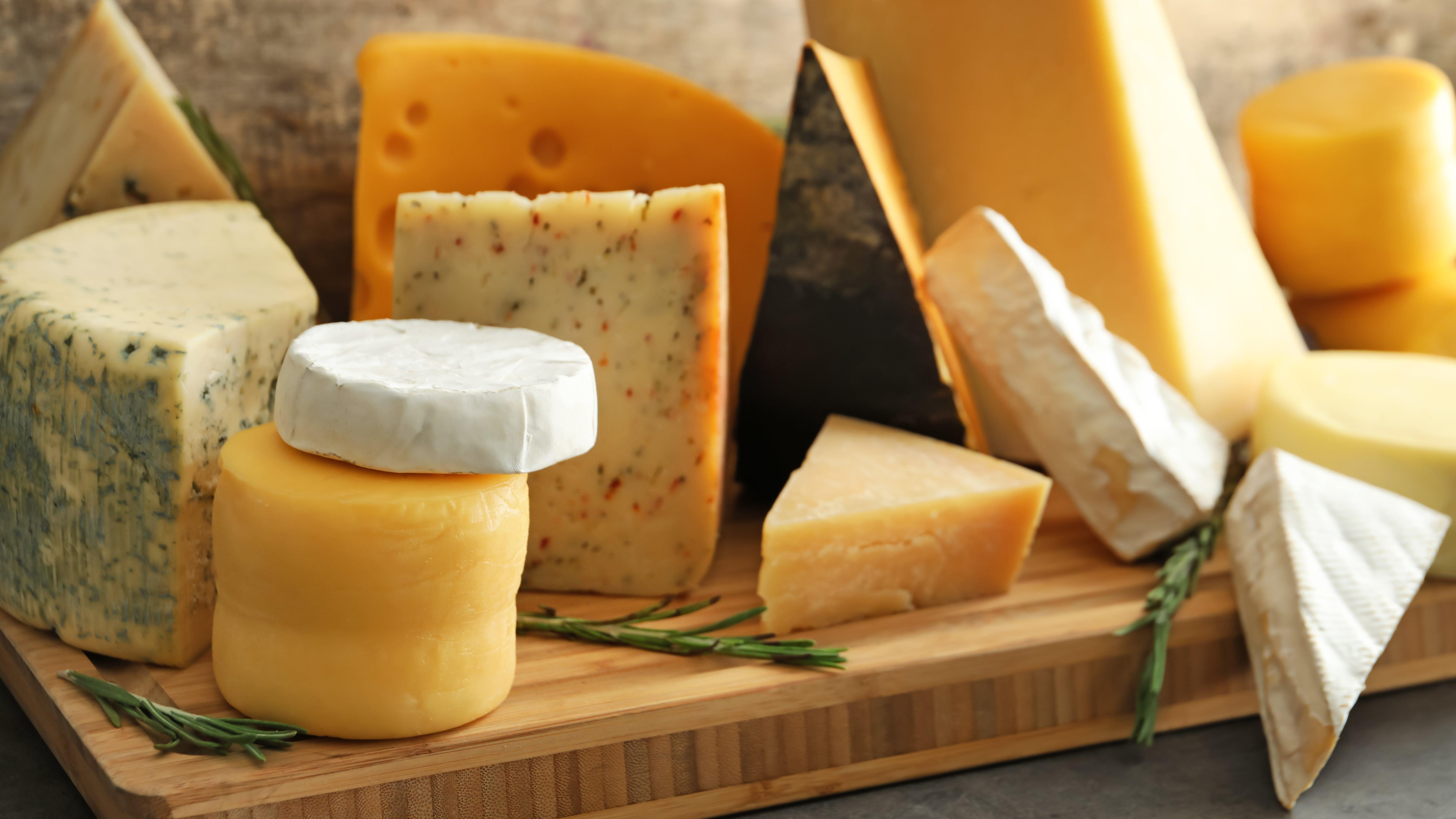Cut The Cheese Like An Adult
There's more to the shape of the cheddar on your cheese board than just visual appeal.
Images of a simple piece of wood beautifully arranged cuts of meat and cheese are what draw most of us in and impress many guests at a dinner party, but is the charcuterie all about the visual? It might be the easiest route to cube up your cheeses and lay out some toothpicks, but perhaps we're not doing the wheels and wedges any justice by cutting them so short.
Erika Kubick, a former cheesemonger and author of the book Cheese, Sex, Death: A Bible for the Cheese Obsessed, clarifies, "You can't call it a charcuterie plate unless there's a primary focus on meat." But whether it's a cheese board, cheese plate, or charcuterie board with cheese playing a supporting role, the way your cheeses are cut does in fact matter.
Types of cheese and how to cut them
Kubrick explains that professional cheesemongers focus heavily on the categorizations of cheeses and often get hung up on the the details of that, but for the everyday person just trying to put together an cheese sampling, these are the categories she breaks cheeses into:
- Firm
- Bloomy cheese (any with a white rind)
- Wash rined (orange/red rind)
- Blue cheeses
- Fresh (not as common on a board or plate)
Each of those cheeses should be cut in a specific way to ensure you get all the flavors out of them in each bite.
For example, Kubrick notes that firm cheeses, like a cheddar, have less moisture and a higher salt content, which creates a more concentrated flavor. People will often cut these cheeses into cubes, but Kubrick advises against that. "You're losing surface area. You want to have a thinner slice when it comes to those cheeses so that your palette is able to grab hold of all of the available flavor complexities in the cheese," explains Kubrick.
In the case of soft, bloomy cheeses like a brie, Kubrick suggests focusing on a balance of rind to paste which she compares to slicing a pie. "When you slice a pie, you don't want to just get the filling. You want to get an even amount of crust around it because the best part about eating the pie is having that combination of the soft filling and the crunchy, salty, buttery, flaky crust," says Kubrick.
Respect the shape of the cheese. So if it's a wheel, cut it like a pie in triangular slices. If the cheese comes in a triangular wedge shape, slice off the top and bottom rind first. Then cut it into thin triangles to maintain the surface area.
For blue cheeses and other crumbly varieties, the rules are much more simple. Let it crumble as it wants to crumble. Kubrick says you'll never get a perfect cut on these types of cheeses and it's actually more texturally pleasing to allow them to cascade off the wedge in natural crumbles.
Tools necessary for proper cheese cutting
As for achieving these cuts, your kitchen drawer need not be filled with tiny specialty cheese knives (unless you're into that). "Most people have the knives you need to prepare cheese," says Kubrick. "You really only need a good chef's knife."
For clarity (and for people like me who did not realize there was a difference between the two), there are knives you use to cut/prepare cheese and there are knives you put out to serve the cheese with. Those tiny little sets of knives that sometimes have a small fork for picking up olives and other charcuterie board items are strictly for serving and decor. Kubrick calls these sets cute but unnecessary. She herself loves serving knives but knows they aren't absolutely needed.
For softer cheeses, Kubrick notes that you'll want a knife with a thinner blade because a thicker blade can cause the cheese to stick to the blade, break, or it can squish the cheese because of the weight. If you don't have a thinly bladed knife, Kubrick also suggests a cheese wire which you wrap around your hand and create clean cuts in the cheese—you could also substitute unflavored dental floss for a cheese wire in a pinch.
In the end, these tips and tricks will help enhance your cheese enjoyment, but they are not law. Kubrick expresses it best when she emphasizes that if you like your cheese in cubes then that's the right way to eat it. Regardless of best practices, it's your board to enjoy.
